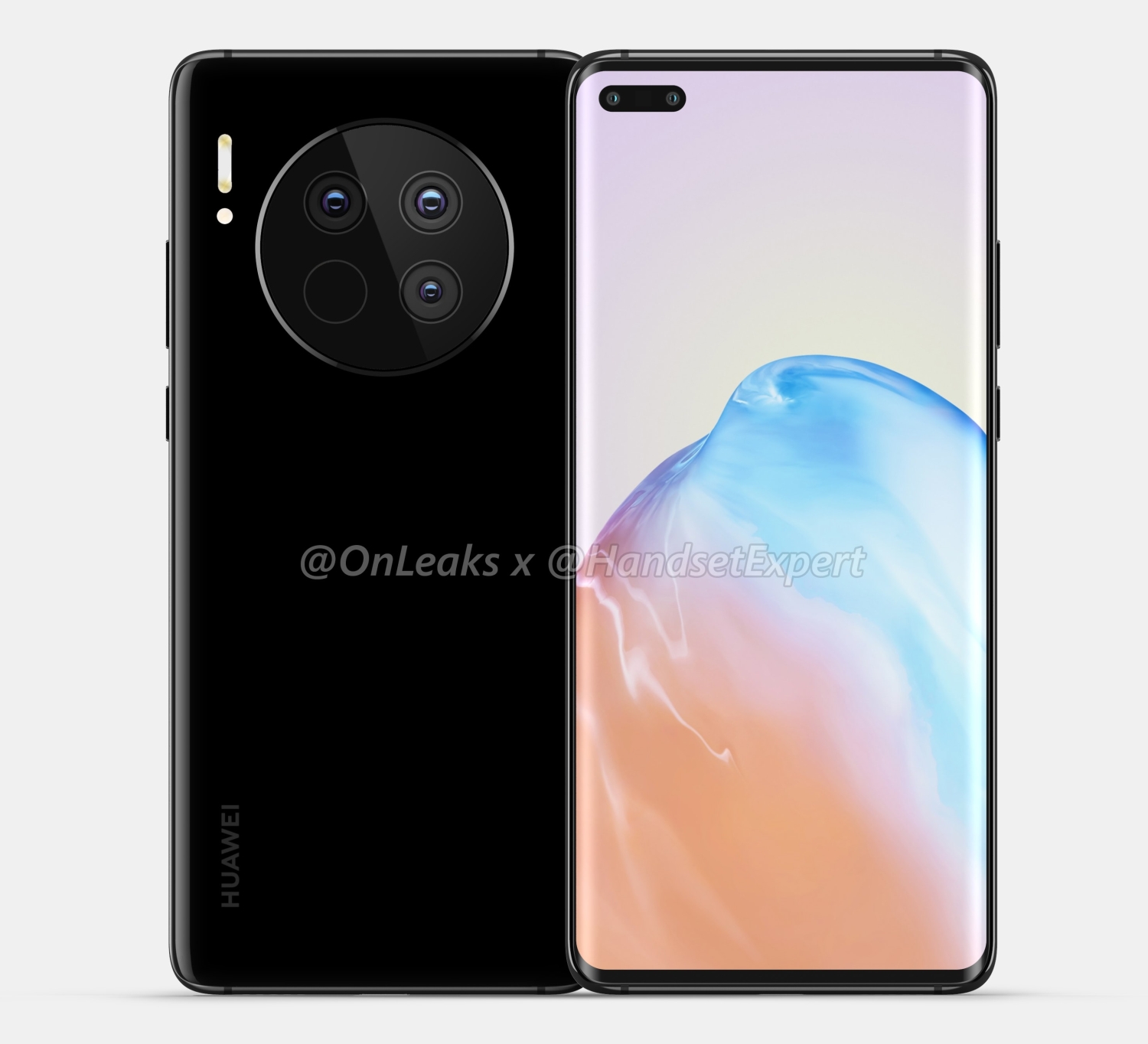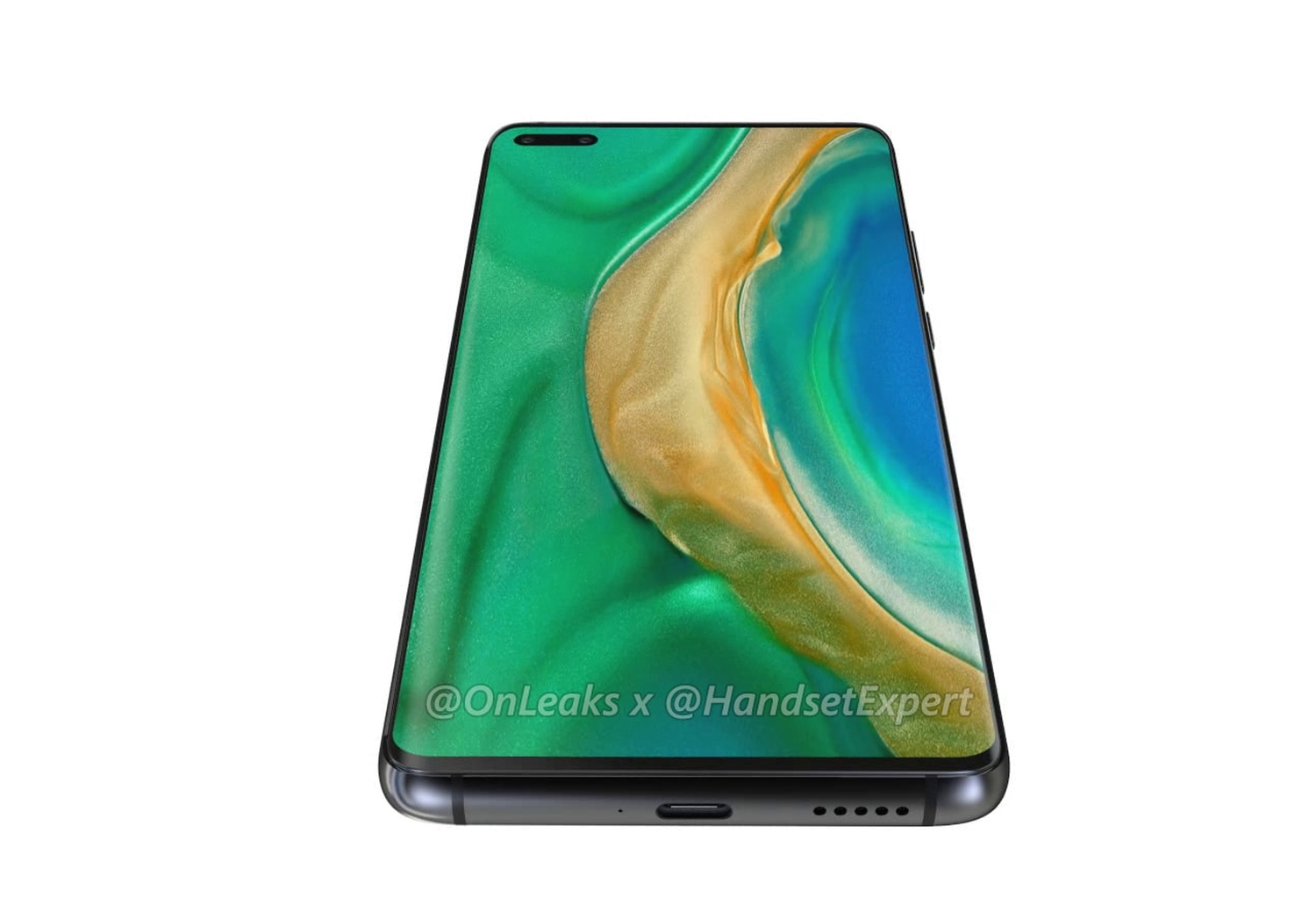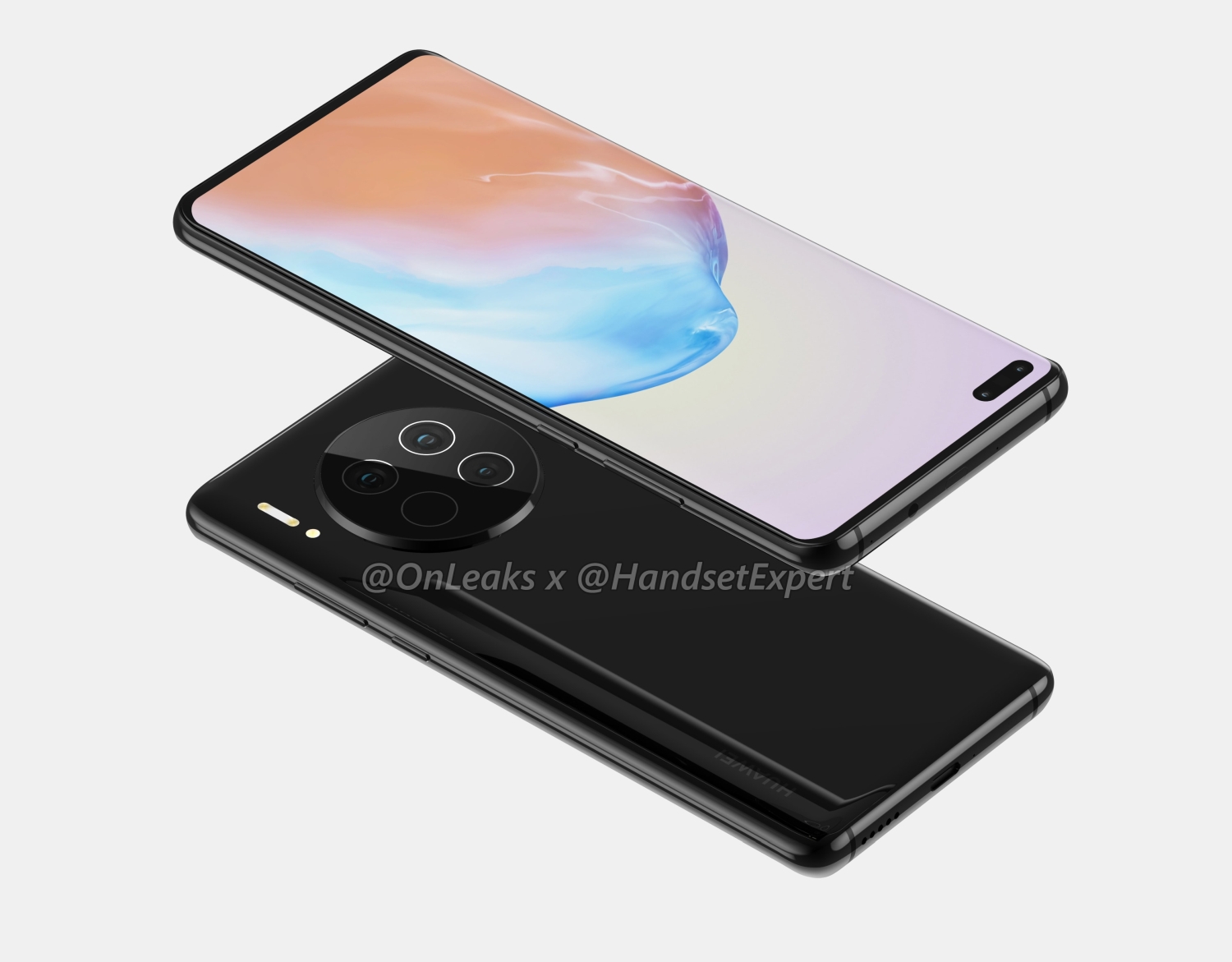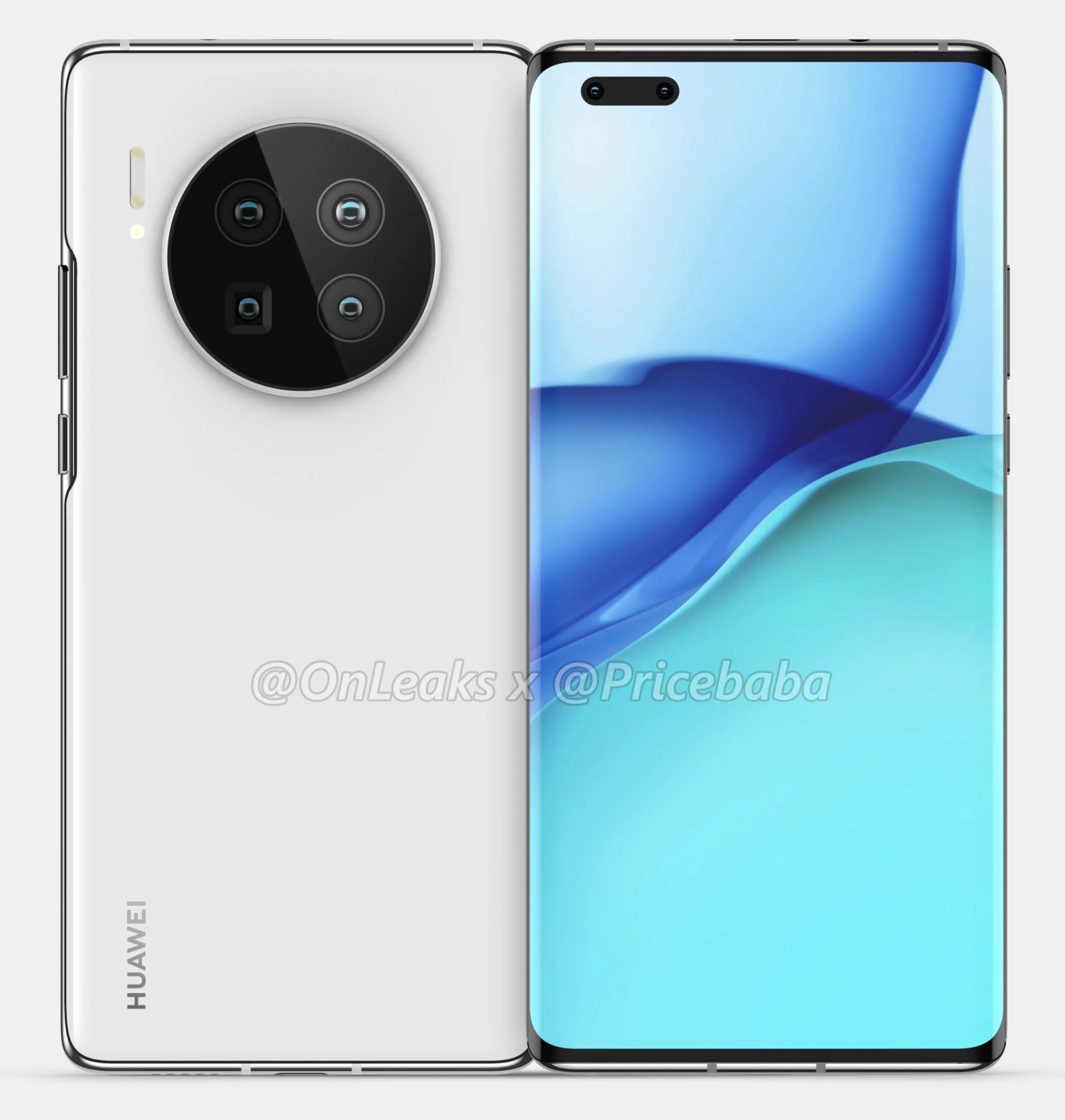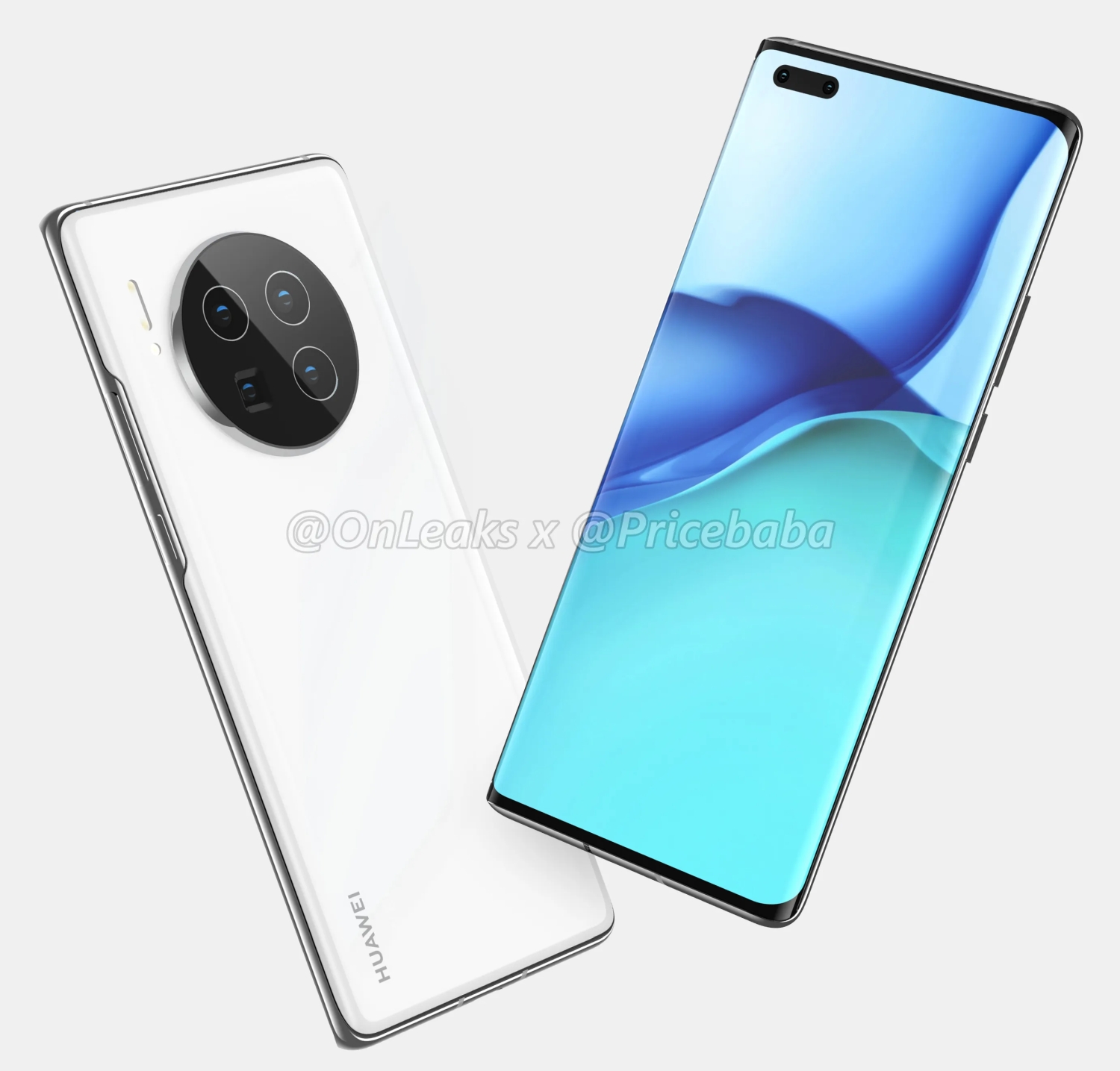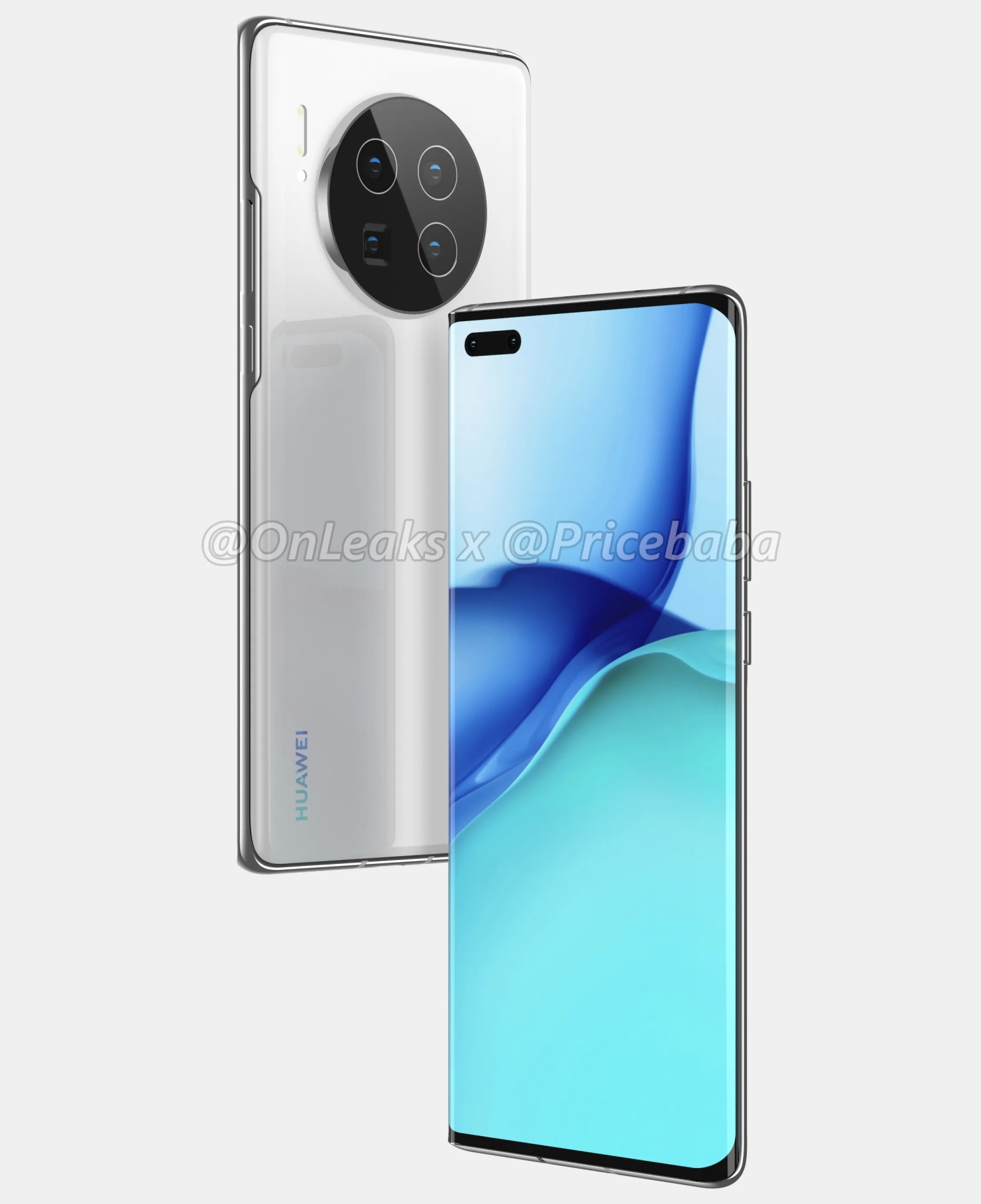As we enter the second half of the year, Huawei is expected to release its new Mate 40 series in the next couple of months. Ahead of the global announcement, prolific leakster @Onleaks has dropped high-resolution renders of the new Huawei flagship devices via Handsetexpert and Pricebaba.
Huawei Mate 40
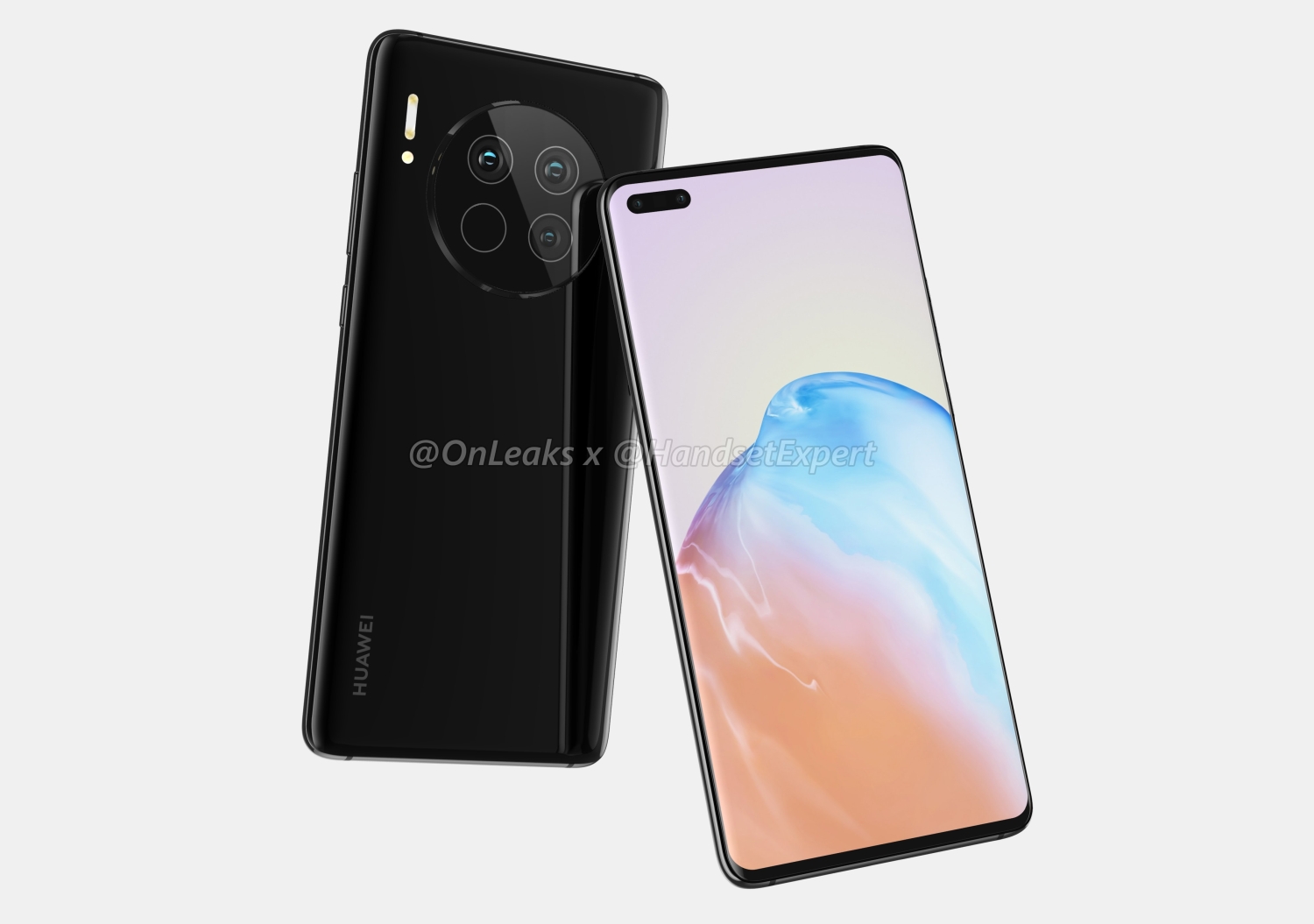
The standard Mate 40 still retains a round camera bump which is said to be larger than the current Mate 30 series. Although it has a 2×2 camera array, the device only comes with a triple-camera setup. At the moment, there isn’t any info on the camera sensors but it could share similar hardware with the Huawei P40 series.
In front, it features what appears to be a 6.4″ dual-curved display and it gets a wide-punch-hole-selfie camera on the top left corner. At a glance, the front looks identical to a Huawei P40 Pro. Interestingly, there are a couple of holes at the top which could house additional sensors. We are hoping that Huawei might include a loud speaker on the top frame which could enable stereo audio playback.
Huawei Mate 40 Pro
Moving on to the Mate 40 Pro which is the more expensive model, it looks similar to the standard Mate 40 but the screen is said to be larger at 6.7″. It will feature a “waterfall” display that curves more aggressively to the sides. Instead of a huge notch on the screen, the Mate 40 Pro is going for a wide-punch-hole-selfie camera as well.
Thankfully, Huawei is bringing back the traditional volume rocker on the right which is much more practical to use than the touch-sensitive side-touch feature on the current Mate 30 Pro.
Over at the rear, it still comes with a quad-camera setup that is arranged in a 2×2 layout. As shown in the render above, one of the cameras has a square module which appears to be a periscope telephoto module. If this is true, this could be a first for the Huawei Mate series and it will provide a longer zoom range like the P flagship series.
The actual hardware specs isn’t revealed yet but it is speculated to be powered by a 5nm Kirin 1020 SoC and you can expect 5G support as standard. Due to the current US restrictions, the devices will still run on Android but without Google apps and services including the PlayStore. This means you will need to rely on the Huawei AppGallery for all your application needs.


